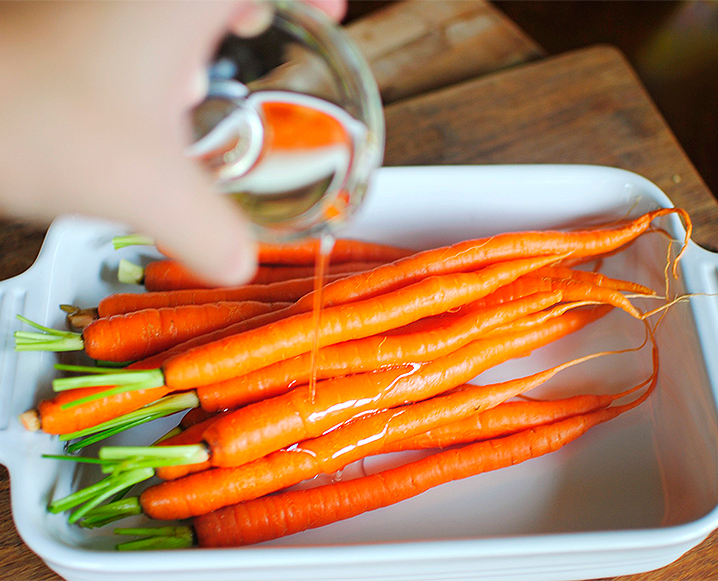While on the path to a healthier, more vibrant life, all of the countless claims and health trends can get confusing. How can you know which to choose from, and what to believe? Finding a focus can seem near to impossible. Today we're going back to basics for a few can't miss, fundamental health tips.
One of the key things in improving your health is your diet, and cooking your meals at home can help with this. By cooking your own food, you've got complete control over the ingredients used, portion size and methods of preparation. Which isn't always true when eating out. But there is one hidden thing about cooking at home that may be cancelling out all of your hard work: the oil you are cooking with.
Choosing the oil you cook with actually makes much more of a difference than just changing the flavour of the meal. Oils are made up of a delicate structure that can easily be damaged by light, heat and oxygen exposure, causing them to become oxidized. When an oil becomes oxidized, it becomes “rancid,” and in turn not only loses all of its nutritional value, but becomes harmful to your body. Choose the wrong oil to cook with, and you're turning a once healthy food choice into a harmful one.
'RANCID'? When a rancid oil is ingested, it creates free radicals in the body, which attack and inflame our very cells down to the DNA. While antioxidants from foods such as blueberries and greens can offset this process, most of the time we don't consume enough of them to fully prevent this from occurring. As a result, free radical damage continues, which is thought to be a major contributing factor in a host of diseases and conditions ranging from high cholesterol, heart disease, cancer and of course, faster aging. Needless to say- things we want to prevent!
So what can we do? We can choose the right oil when preparing food, making sure that it won't be damaged while cooking. Choose your oil based on its flavor profile, but also on the type of cooking method that you’re going to be using: use an oil or fat with the right 'smoke point'. A smoke point is the temperature at which an oil or fat begins to break down and starts to become rancid. Every oil is different! Take the time to learn about a few of your favorite oils and your efforts will most certainly be worth the benefits.
Another thing to pay attention to is also how your oils are bottled and stored. Remember, oils can be damaged by light, so always purchase ones packaged in dark bottles (except for coconut oil – this is a more stable oil) and store them in a cool dark place.

How To Cook with the Right Oils
NO DIRECT HEAT: DRESSING OR FINISHING (225°F OR LESS)
Flax seed oil, unrefined sunflower oil, unrefined safflower oil, cold-pressed macadamia nut oil, borage oil, primrose oil, truffle oil, unrefined hazelnut oil, pistachio oil, pumpkin seed oil
LOW HEAT: LIGHT SAUTÉ OR LOW-HEAT BAKING (330 TO 225°F)
Unrefined walnut oil, extra virgin olive oil, hemp seed oil
MEDIUM HEAT: SAUTÉ, STIR-FRY OR WOK (350 TO 280°F)
Unrefined sesame oil, unrefined virgin coconut oil, butter, unrefined peanut oil, unrefined toasted sesame oil
MEDIUM HIGH HEAT OIL: BAKING, SEARING OR SAUTÉ (425 TO 350°F)
Ghee (clarified butter), extra light olive oil, refined walnut oil, unrefined high oleic safflower, coconut oil.
HIGH HEAT: FRYING OR BAKING (425 TO 500°F)
Unrefined avocado oil, expeller pressed grapeseed oil, apricot kernel oil, palm kernel oil, peanut oil, refined oils (sunflower, safflower, sesame, almond)
Sources and more reading:
1. https://en.wikipedia.org/wiki/Template:Smoke_point_of_cooking_oils & https://en.wikipedia.org/wiki/Smoke_point



Leave a comment: